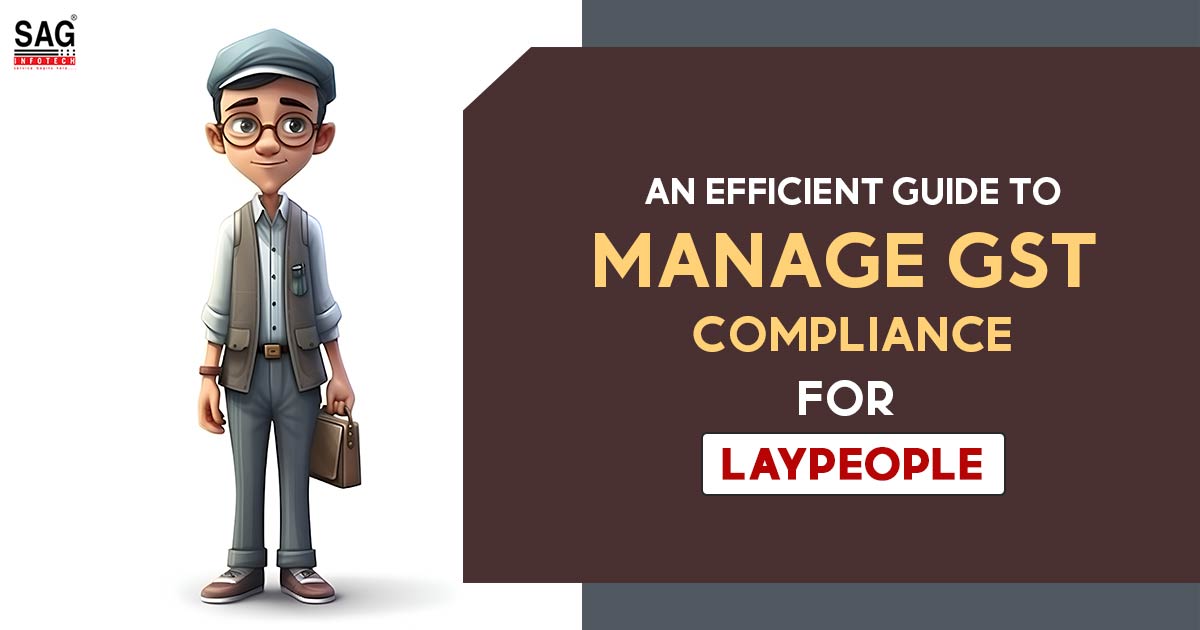
The implementation of the Goods and Services Tax (GST) system in India has brought some significant transformations in how businesses handle their tax compliance responsibilities.
Given the range of requirements including e-invoicing, e-way bills, invoice management, credit and debit notes, input tax credits, tax payments, annual return filings, and reconciliations, it is crucial for businesses to grasp and efficiently administer these elements of Goods and Services Tax compliance.
In this detailed article, we will guide you through the fundamental components of Indian GST compliance and offer practical insights into how businesses can effectively navigate and streamline their operations to ensure compliance.
What is E-Invoicing For GST Compliance?
E-invoicing is one of the crucial elements of GST compliance. E-invoicing entails the generation and maintenance of electronic invoices in a systematized format that undergoes electronic authentication by the GST Network (GSTN). Its primary objectives are to automate and optimize the invoicing process, minimize errors, and bring transparency.
What Are the Advantages of E-Invoicing?
- Real-time Monitoring: Businesses can monitor the status of their invoices in real-time ensuring improved cash flow management.
- Making Compliance Simpler: E-invoicing ensures compliance with GST regulations by capturing all pertinent invoice details.
- Enhanced Accuracy: E-invoicing removes manual data entry errors, precisely guaranteeing the accuracy of invoice details.
- Boosted Processing: Electronic invoices can be processed at a fast pace, thereby reducing overall processing time.
- Amplified Data Analytics: GST Electronic e-invoices produce invaluable data for analysis, enabling businesses to gain profound insights into their operations.
Implementing E-Invoicing Effectively:
To ensure a successful implementation of e-invoicing, businesses should adhere to the following steps:
- Generate E-Invoices: Create e-invoices in the prescribed format, ensuring the inclusion of all mandatory fields and information required by the GSTN.
- Authenticate and Submit E-Invoices: Authenticate and submit the e-invoices to the IRP for validation and authentication. The IRP will furnish a unique Invoice Reference Number (IRN) and digitally signed invoices featuring QR codes.
- Maintain E-Invoice Records: Keep comprehensive records of all generated e-invoices, including the IRN and other pertinent details, for future reference and potential audit purposes.
- Determine the Applicable Turnover Threshold: E-invoicing becomes mandatory for businesses with an annual aggregate turnover exceeding INR 10 crores. Companies with turnovers below this threshold cannot voluntarily opt for e-invoicing.
- Verify GSTIN Number: Verify that your business possesses a valid GST Identification Number (GSTIN) duly registered with the GST Network (GSTN).
- Integrate with the Invoice Registration Portal (IRP): Establish a connection between your billing systems or accounting software and the Invoice Registration Portal (IRP) to generate e-invoices in the required format.
Effective E-Way Bill Management for GST Compliance:
Another pivotal facet of GST compliance revolves around the generation and management of e-Way Bills. An e-Way Bill is an essential document for transporting goods valued at over INR 50,000 from one location to another. It encompasses crucial information, such as the consignment’s value, invoice specifics, transporter details, and the vehicle tasked with carrying the goods.
What Are the Advantages of GST E-Way Bills?
- Streamlined Transportation: E-Way Bills streamline the movement of goods by obviating the necessity for physical documentation and reducing bureaucratic procedures.
- Enhanced Monitoring: Authorities can monitor the real-time movement of goods, fostering transparency and mitigating the risks associated with tax evasion.
- Paperwork Reduction: E-Way Bills eliminate the need for physical paperwork, making the process more efficient and environmentally friendly.
- Expedited Delivery: With e-Way Bills, the conveyance of goods can be expedited, guaranteeing prompt delivery and heightened customer satisfaction.
How to Generate and Manage E-Way Bills?
To proficiently handle e-Way Bills, businesses should adhere to the following steps:
- Registration on the e-Way Bill portal: Begin by registering your business on the e-Way Bill portal. This entails furnishing essential details and acquiring a unique username and password.
- E-Way Bill Generation: Generate e-Way Bills online by inputting necessary particulars such as the invoice number, goods’ value, transporter information, and vehicle number.
- Validation of the e-Way Bill: Validate the e-Way Bill by providing requisite information and meticulously verifying the entered details.
- Assignment of e-Way Bill to Transporter: Assign the e-Way Bill to the designated transporter responsible for overseeing the goods’ transit.
- Real-time Status Updates: Regularly update the e-Way Bill’s status on the portal to align with the progression of the goods’ movement.
- Precise Record-Keeping: Keep meticulous records of all generated e-Way Bills, inclusive of the unique e-Way Bill numbers, to facilitate future referencing and potential audits.
How to Manage Invoices, Credit Notes, and Debit Notes Under GST?
Proficiently managing invoices, credit notes, and debit notes is an integral element of adhering to GST compliance, making a solid grasp of the requisites and protocols governing these documents.
Invoices
An invoice, issued by a supplier to a recipient, comprehensively outlines the goods or services provided, alongside the associated tax details. Here are optimal practices for effective invoice management:
- Precision and Completeness: Ensure the inclusion of all mandatory particulars, encompassing the supplier’s GST Identification Number (GSTIN), recipient’s GSTIN, invoice number, invoice date, goods or services description, quantity, value, and applicable taxes.
- Sequential Numbering System: Implement a systematic sequential numbering system for invoices, ensuring meticulous record-keeping and compliance adherence.
- Timely Issuance: Adhere to stipulated time limits for issuing invoices to evade penalties and maintain GST regulatory compliance.
- Preserving Invoice Copies: Preserve duplicates of all issued and received invoices for a minimum of six years to facilitate future reference and audit trail compliance.
Credit Notes
A credit note, issued by a supplier to rectify errors or adjust the original invoice, demands consideration of the following key aspects:
- Accuracy and Complete Details: Furnish crucial details such as the original invoice number, date, rationale behind the credit note issuance, and the corrected values.
- Timely Release of Credit Notes: Issue credit notes within prescribed timeframes to rectify discrepancies and practice accurate financial reporting.
- Systematized Record-Keeping: Keep meticulous records of all credit notes issued and received, substantiating organized record-keeping practices and future referencing requirements.
Debit Notes
A debit note serves as a document issued by the recipient to the supplier for recording additional charges or adjustments related to the initial invoice. Below are key considerations for effectively managing debit notes:
- Comprehensive and Accurate Information: Ensure that all necessary details, such as the original invoice number, date, reason for issuing the debit note, and corrected values, are included.
- Timely Assignment of Debit Notes: Adhere to prescribed time limits for issuing debit notes to accurately document additional charges or adjustments.
- Maintain Record: Maintain copies of all issued and received debit notes for proper record-keeping and future reference.
Accurate GST ITC with a Timely Claiming Method
Input Tax Credit (ITC) is a critical element of GST compliance, enabling businesses to claim credit for taxes paid on inputs or input services used in the production or supply of goods or services. Effectively managing ITC and ITC claims can reduce tax liabilities and enhance cash flow.
How to Understand the Input Tax Credit (ITC)
- ITC Eligibility: To claim ITC, the recipient must possess a valid tax invoice or debit note, and the supplier must have filed GST returns and paid the applicable taxes.
- Conditions for ITC Claims: Goods or services must be used for business purposes, and the recipient must have received them.
- Blocked Credits: Certain inputs or services, such as motor vehicles, food and beverages, and those used for personal purposes, are not eligible for ITC.
Strategies to Correct GST ITC Claims
To ensure accurate ITC claims, businesses should adopt the following strategies:
- Proper Documentation: Maintain precise records of tax invoices, debit notes, and supporting documents to substantiate ITC claims.
- Reconciliation with Supplier Data: Reconcile purchases with supplier data to identify discrepancies and promptly rectify them.
- Timely Return Filing: File GST returns punctually to ensure supplier compliance, facilitating seamless Input tax credit claims.
- Periodic Review: Conduct periodic reviews to identify missed or under-claimed ITC and rectify any errors or omissions.
- Employee Education: Train procurement and accounting personnel on the importance of proper documentation and compliance to maximize ITC claims.
GST Payments and Returns Filed on Time
Payment before the due dates of tax return submission and adherence to GST return filing requirements are crucial for GST compliance. Delayed or incorrect GST payments and non-compliance with return filing can result in penalties and legal issues. Here’s how businesses can manage these aspects effectively:
Payment of Tax
- Calculate Accurate Tax Liability: Calculate tax applicability precisely based on applicable rates and the value of supplied goods or services.
- Timely Payments: Ensure tax liabilities are paid within stipulated due dates to avoid penalties and interest charges.
- Right Payment Method: Utilize the online payment methods available on the GST portal for a quick payment process.
- Tax Payment Records: Keep the records of all tax payments, including payment reference numbers and dates, for future reference and audit purposes.
GST Return Filing
- Familiarize Yourself with Return Requirements: Gain a comprehensive understanding of return types and their respective deadlines, relevant to your business category and turnover.
- Return Submission Before Due Date: Make sure you file the return before the stipulated deadline for GST returns. Adhering to given due dates to avoid the penalties and legal hassles.
- Completeness and Accuracy: Guarantee that all relevant information such as sales, purchases, and input tax credits, are not only included in returns but also meticulously and comprehensively reported.
- Reconciliation and Corrections: Regularly conduct reconciliations between return data and your accounting records, to identify any possible errors.
- Maintain Return Records: Keep a well-organized record of all filed returns, including acknowledgement numbers and dates, for the purpose of future reference and audit.
GST Annual Return and Reconciliation
In addition to regular return filing, it is crucial for businesses to submit an annual return and reconcile their GST data with financial statements. This annual compliance activity serves as a fundamental aspect in ensuring the precision and comprehensiveness of GST data. Here’s a structured approach for managing the annual return and reconciliation process effectively:
GST Annual Return Filing
- Familiarize Yourself with Return Framework: Thoroughly understand the annual return format, which is different for any individual taxpayer and for those with annual turnovers exceeding INR 5 crores. The filing formats are GSTR-9 and GSTR-9C respectively.
- Compile Essential Data: Collect all requisite information such as sales, purchases, input tax credits, and other financial details, to complete the annual return meticulously.
- Comprehend with Financial Statements: Ensure seamless consistency and precision by coordinating the data mentioned in the annual return with your financial statements.
- On-Time Submission: Keep in mind the due date to file the annual return and save yourself from penalties and legal consequences.
- Keep Return Records: Systematically manage and keep the records of all annual returns submitted, making sure the record bears acknowledgement details and dates, for the purpose of reference and audit.
GST Data Reconciliation
- Match Sales and Purchases: Systematically coordinate sales and purchase data reported in your GST returns with corresponding entries in your accounting records for spotting potential errors.
- Resolve Errors: In cases where discrepancies occur during reconciliation, initiate prompt corrective action and update the information within your GST returns.
- Hold Reconciliation Documentation: Sustain records of GST reconciliation statements via GSTR 9C form precisely, accompanied by supporting documentation, facilitating future reference and audit inquiries.
Conclusion: Adhering to GST compliance in India and maintaining the regulations is pivotal for businesses, evading unwanted penalties, and sustaining seamless operations. By comprehending and implementing the various elements of GST compliance like e-invoicing, e-way Bills, invoice management, credit and debit notes, input tax credit, tax payment, return filing, and annual return and reconciliation, companies can ease the way they function, ensuring GST compliance.
Staying informed about the latest regulations, seeking professional counsel when needed, and maintaining precise records are essential elements in skillfully navigating the complexities of GST compliance.









